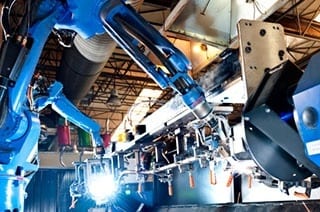What Happens to Your Coated Products When You Skip the Primer?
The application of industrial coatings requires several steps to ensure the end product meets specifications. One of the essential first steps is priming. Unlike consumer grade primers that may often be skipped before a DIY painting project, an industrial primer should never be omitted if you want to maximize the overall quality and feel of your project.
Preparation of the Surface
Industrial coatings can be applied to a wide variety of surfaces from plastic to wood to steel. Each of these surfaces must be prepped to allow the coatings material to adhere and withstand extensive consumer use. Primers provide that initial coat which will act as a building block for the other layers of coating to bond and form a solid composite material. Without that foundation, the overall quality may be sacrificed.
Increased Durability and Performance
Not only will a quality industrial primer bridge the gap between the initial surface and the additional top coatings, the right primer will actually enhance the overall performance of the top applications by reducing the minute imperfections of the underlying surface. The primer will fill in any dips or flaws and will smooth the area to near perfection. This allows for thinner top coat application while achieving a superior end product.

Improved Compatibility
Every carpenter knows that the key to a sturdy house is its foundation. The primer acts as the foundation for the top coat by providing a surface to which the top coat is compatible and will easily adhere to. This will greatly reduce the incidents of peeling and other types of top coat failure for your products. Likewise, the reduction of top coat failure will increase the overall satisfaction for your end user which will lead to fewer consumer complaints and greater customer satisfaction.
Enhanced Longevity
Consumers and elements can be harsh on a product. Sunlight, water, grit, and general use can all play havoc with the top coat. Many primers are specifically formulated to prevent wear and tear while still maintaining adhesion with the top coat.
Greater Profitability
As mentioned before, the right primer will reduce the amount of top coating needed while increasing the overall performance of the end product. Since the primer coat is far less expensive than the top coatings, this allows you and your organization to realize a greater profit margin while minimizing overall production costs.
Have you had negative experiences related to skipping the primer? Share your stories in the comments below!


